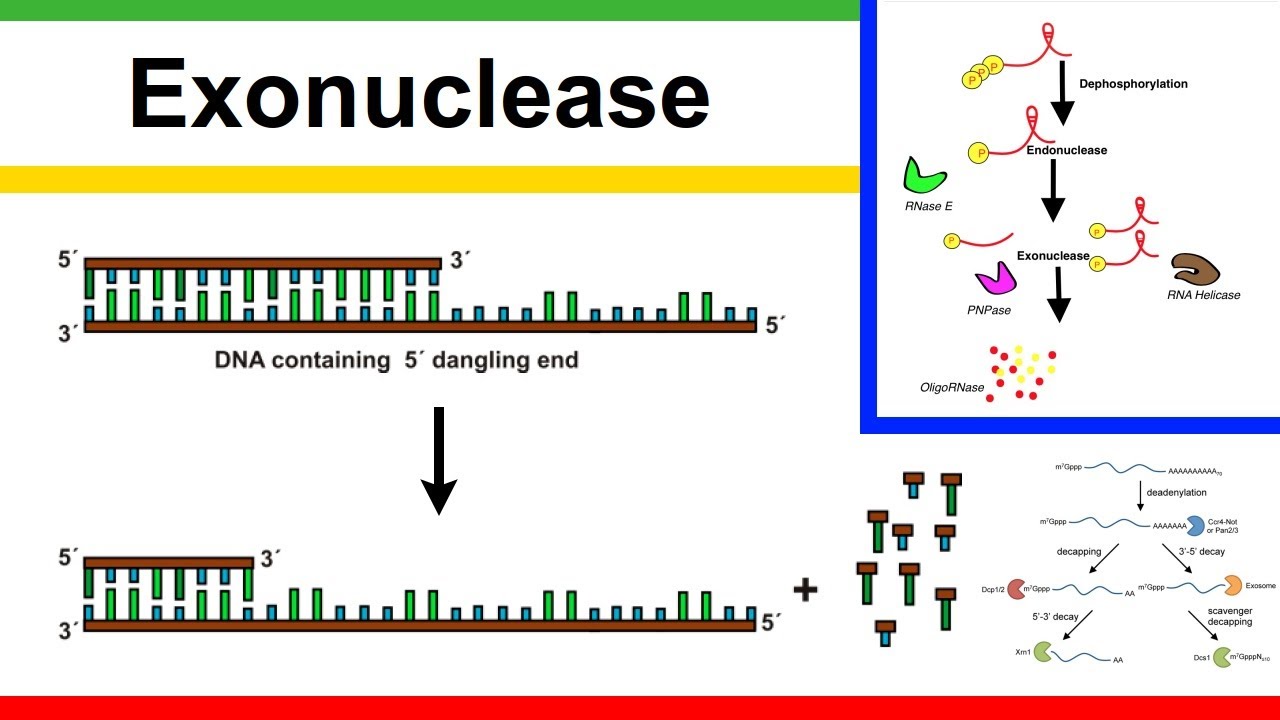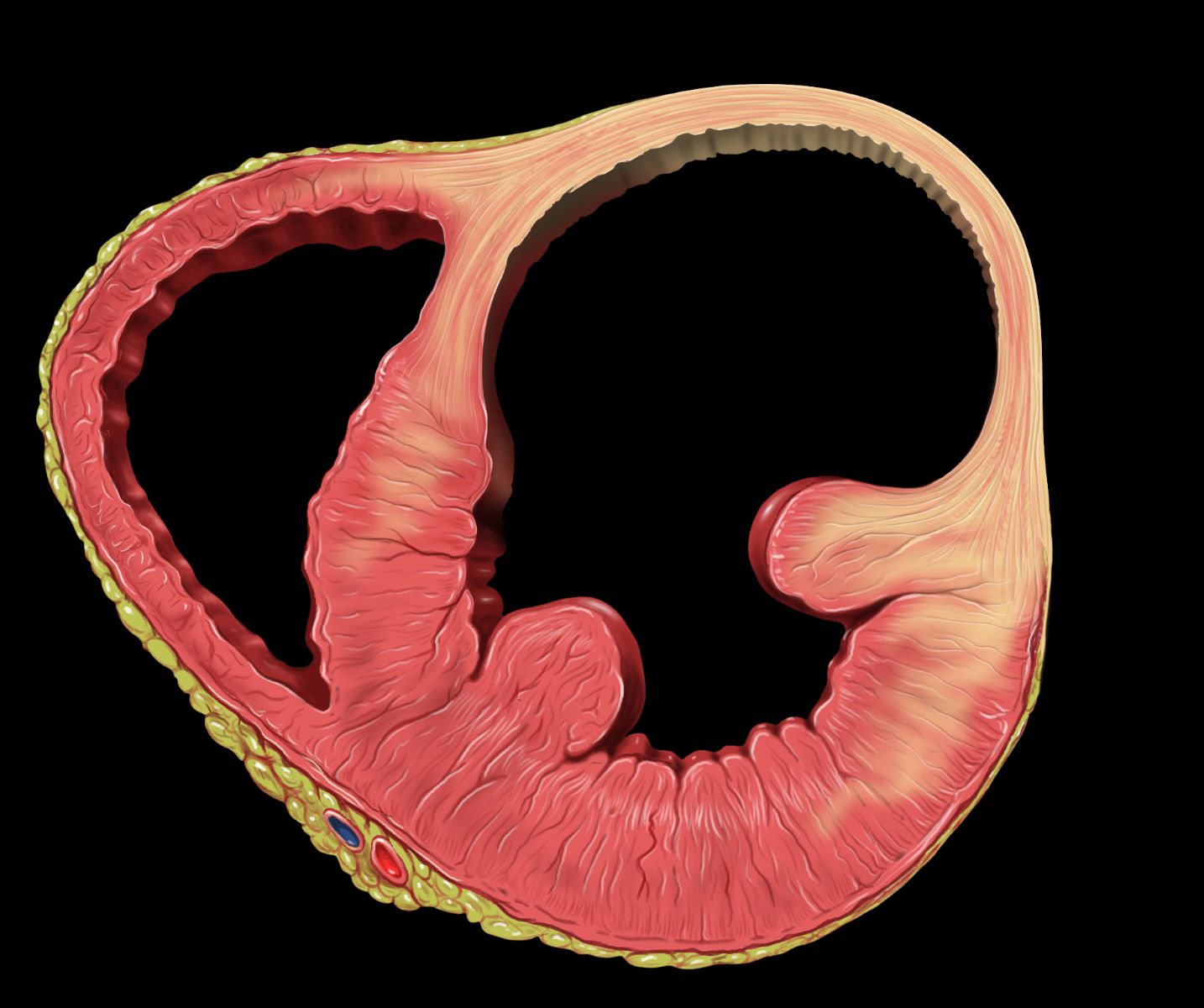
What is exonuclease? Exonuclease is an enzyme that plays a crucial role in DNA and RNA processing. It works by removing nucleotides one at a time from the end of a DNA or RNA strand. This action is vital for various cellular processes, including DNA repair, replication, and degradation of RNA. Exonucleases ensure genetic material is accurately maintained and any errors are corrected. Without these enzymes, cells would struggle to fix damaged DNA or properly recycle RNA molecules. Understanding exonuclease functions can help in fields like genetics, molecular biology, and medicine. Ready to dive into 50 fascinating facts about exonuclease? Let's get started!
Key Takeaways:
- Exonucleases are essential enzymes that help fix DNA mistakes, regulate gene expression, and play a role in genetic diseases. They are like the "spell-checkers" of our genetic code, ensuring everything runs smoothly.
- These versatile enzymes have diverse functions, from repairing DNA to aiding in biotechnology and research. They are like the Swiss Army knives of the genetic world, with endless possibilities for improving our understanding of life.
What is Exonuclease?
Exonucleases are enzymes that play a crucial role in DNA and RNA processing. They work by removing nucleotides one at a time from the end of a DNA or RNA molecule. Let's dive into some fascinating facts about these essential enzymes.
- Exonucleases are vital for DNA repair by removing damaged or mismatched nucleotides.
- They can work on both DNA and RNA, making them versatile in genetic processes.
- These enzymes are categorized based on the direction they remove nucleotides: 3' to 5' or 5' to 3'.
- Exonucleases are different from endonucleases, which cut within the DNA strand rather than at the ends.
- They play a role in the degradation of RNA molecules, helping to regulate gene expression.
Types of Exonucleases
There are various types of exonucleases, each with specific functions and characteristics. Understanding these types can help us appreciate their diverse roles in cellular processes.
- Exonuclease I: Works in the 3' to 5' direction, primarily involved in DNA repair.
- Exonuclease III: Also works in the 3' to 5' direction, known for its role in DNA proofreading.
- Exonuclease VII: Unique for working in both 5' to 3' and 3' to 5' directions.
- RNase T: An exonuclease that degrades RNA molecules from the 3' end.
- RecJ: A 5' to 3' exonuclease involved in DNA repair and recombination.
Functions of Exonucleases
Exonucleases are involved in various cellular functions, making them indispensable for maintaining genetic integrity. Here are some key functions they perform.
- DNA Replication: They help remove RNA primers during DNA replication.
- DNA Repair: Exonucleases excise damaged or mismatched nucleotides.
- RNA Processing: They degrade unnecessary RNA molecules, aiding in gene regulation.
- Proofreading: Exonucleases ensure the accuracy of DNA replication by removing incorrect nucleotides.
- Recombination: They play a role in genetic recombination by processing DNA ends.
Exonucleases in Biotechnology
Exonucleases have significant applications in biotechnology and molecular biology. Their ability to manipulate DNA and RNA makes them valuable tools in research and industry.
- DNA Sequencing: Used to prepare DNA samples for sequencing by removing unwanted nucleotides.
- Cloning: Help in creating recombinant DNA by processing DNA ends.
- PCR Cleanup: Remove excess primers and nucleotides after PCR amplification.
- Gene Editing: Assist in precise gene editing techniques like CRISPR by processing DNA ends.
- RNA Analysis: Used in studying RNA degradation and stability.
Exonuclease Mechanisms
Understanding the mechanisms by which exonucleases work can provide insights into their efficiency and specificity. Here are some details about their mechanisms.
- Hydrolysis: Exonucleases break phosphodiester bonds through hydrolysis, releasing nucleotides.
- Metal Ions: Many exonucleases require metal ions like Mg2+ or Mn2+ for activity.
- Substrate Specificity: They recognize specific nucleotide sequences or structures for precise action.
- Processivity: Some exonucleases can remove multiple nucleotides without dissociating from the substrate.
- Regulation: Exonuclease activity is tightly regulated to prevent unwanted degradation of genetic material.
Exonucleases in Disease
Mutations or malfunctions in exonucleases can lead to various diseases, highlighting their importance in maintaining cellular health.
- Cancer: Defective exonucleases can cause genomic instability, leading to cancer.
- Neurodegenerative Diseases: Impaired RNA degradation by exonucleases is linked to neurodegenerative disorders.
- Autoimmune Diseases: Abnormal exonuclease activity can trigger autoimmune responses.
- Premature Aging: Faulty DNA repair by exonucleases can accelerate aging processes.
- Genetic Disorders: Mutations in exonuclease genes can cause inherited genetic disorders.
Evolution of Exonucleases
Exonucleases have evolved to perform specialized functions in different organisms. Studying their evolution can reveal how these enzymes have adapted to various cellular needs.
- Conserved Domains: Many exonucleases share conserved domains, indicating a common evolutionary origin.
- Gene Duplication: Exonuclease genes have undergone duplication, leading to functional diversification.
- Horizontal Gene Transfer: Some exonuclease genes have been transferred between species, contributing to genetic diversity.
- Adaptive Evolution: Exonucleases have evolved to meet the specific needs of different organisms.
- Phylogenetic Studies: Comparing exonuclease genes across species helps trace their evolutionary history.
Exonucleases in Research
Exonucleases are invaluable tools in scientific research, enabling various experimental techniques and discoveries.
- Genome Editing: Used in genome editing to create precise DNA modifications.
- DNA Footprinting: Help identify protein-DNA interactions by processing DNA ends.
- RNA Sequencing: Aid in preparing RNA samples for sequencing by removing unwanted fragments.
- Mutagenesis Studies: Used to study the effects of mutations on DNA and RNA stability.
- Structural Biology: Help determine the structures of DNA and RNA molecules by processing their ends.
Future of Exonuclease Research
The study of exonucleases continues to evolve, with new discoveries and applications emerging. Here are some future directions for exonuclease research.
- Therapeutic Applications: Developing exonuclease-based therapies for genetic diseases.
- Synthetic Biology: Engineering exonucleases for synthetic biology applications.
- Nanotechnology: Using exonucleases in nanotechnology for precise DNA and RNA manipulation.
- Environmental Biotechnology: Applying exonucleases in bioremediation and environmental monitoring.
- Personalized Medicine: Using exonucleases to develop personalized medical treatments based on genetic information.
Interesting Facts About Exonucleases
Here are some additional intriguing facts about exonucleases that highlight their versatility and importance.
- Ancient Origins: Exonucleases are believed to have ancient origins, dating back to early life forms.
- Diverse Functions: They perform a wide range of functions, from DNA repair to RNA degradation.
- Essential for Life: Exonucleases are essential for the survival of all living organisms.
- Biotechnological Innovations: They have driven numerous biotechnological innovations and advancements.
- Continued Research: Ongoing research continues to uncover new roles and applications for exonucleases.
The Final Word on Exonucleases
Exonucleases play a crucial role in DNA repair, replication, and degradation. These enzymes, by removing nucleotides from the ends of DNA strands, ensure genetic material remains accurate and functional. Without them, cells would struggle to maintain genetic integrity, leading to mutations and diseases.
Understanding exonucleases helps in fields like genetics, molecular biology, and medicine. Researchers can develop better treatments for genetic disorders and improve techniques in biotechnology. From their discovery to their applications, exonucleases have proven indispensable in scientific advancements.
So, next time you think about DNA and its complexities, remember the unsung heroes—exonucleases. They might be tiny, but their impact on life is monumental. Keep exploring the wonders of biology, and who knows what other fascinating facts you'll uncover!
Frequently Asked Questions
Was this page helpful?
Our commitment to delivering trustworthy and engaging content is at the heart of what we do. Each fact on our site is contributed by real users like you, bringing a wealth of diverse insights and information. To ensure the highest standards of accuracy and reliability, our dedicated editors meticulously review each submission. This process guarantees that the facts we share are not only fascinating but also credible. Trust in our commitment to quality and authenticity as you explore and learn with us.


